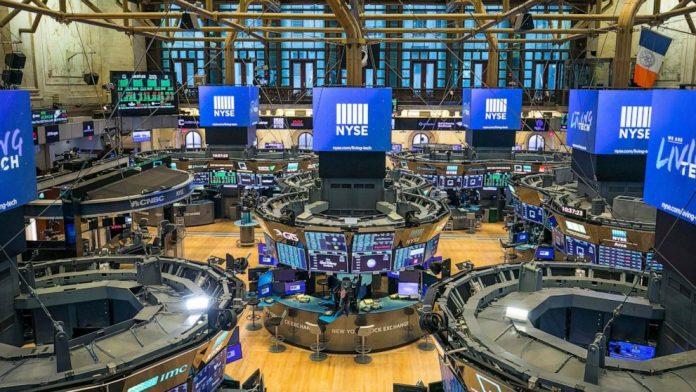
U.S. stock futures are improving, after government data revealed that nearly 3.3 million Americans filed for unemployment benefits last week, highlighting the economic toll of the coronavirus pandemic. Despite the record-breaking surge in jobless claims—far surpassing the previous high set in 1982—the number was not as severe as some analysts predicted.
Prior to the release of the data, Dow Jones Industrial Average futures indicated a decline of nearly 500 points. Minutes after the report was released, losses eased to about 200 points. Stocks had posted gains on Tuesday and Wednesday, buoyed by Federal Reserve measures to stabilize credit markets and the Senate’s approval of a $2.2 trillion stimulus package.
The S&P 500 remains 27% below its February 19 peak. Many traders expect continued volatility until the spread of new coronavirus cases slows.
Unemployment filings generally track layoffs, which are expected to increase as the U.S. economy heads toward recession.
Meanwhile, Goldman Sachs warned Thursday that oil prices could fall further. The bank said plummeting demand for gasoline and jet fuel—caused by travel restrictions and stay-at-home orders—could soon overwhelm storage capacity, suggesting that some oil producers may end up shutting some wells. .
Goldman expects Brent crude, the international oil benchmark, to average $20 per barrel in the second quarter, down from about $29 currently. U.S. crude prices could drop “well below $20 a barrel.” On Thursday morning, U.S. crude traded near $23.70 per barrel.
Global oil demand is projected to decrease by 10.5 million barrels per day in March and 18.7 million barrels per day in April. Although OPEC and Russia may attempt production cuts, Goldman analysts wrote, “We expect a demand shock of this magnitude to overwhelm any supply response.”
They also cautioned that once demand recovers, oil prices could rise sharply because restarting shut-in production is difficult, potentially leading to shortages after existing supplies run out.








